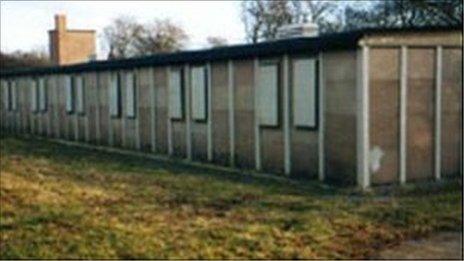German PoW 'great escape' in Wales marks 75 years
- Published
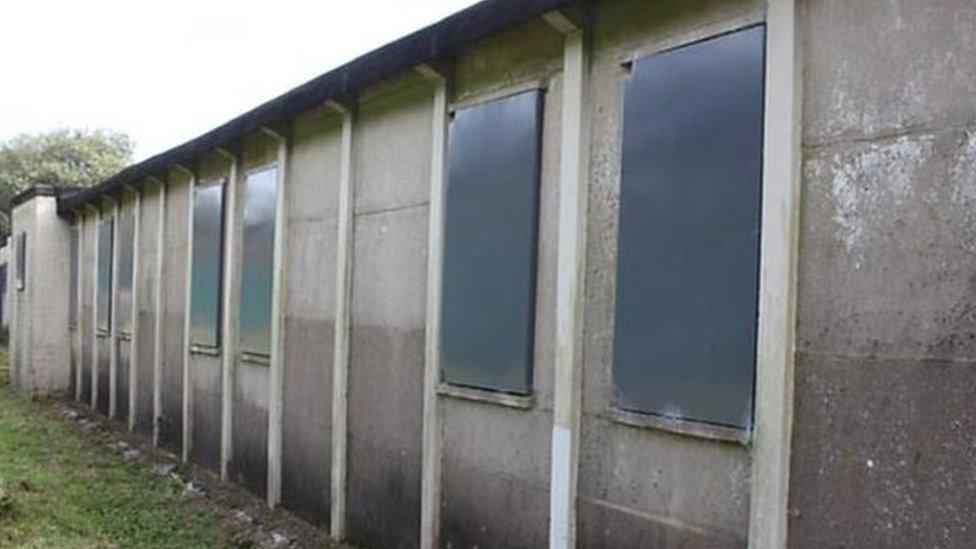
Hut 9: German PoWs tunnelled out from the hut in their escape bid
It was the biggest Prisoner of War escape attempt in Britain - as 70 German World War Two PoWs tried to tunnel to freedom.
Now, 75 years on from the breakout on the 10 March, 1945, hundreds of visitors will get a rare chance to view the Island Farm camp in Bridgend for themselves.
Free tickets for the tour of PoW Hut 9 went in minutes - with all 800 places for this weekend taken.
"All that's left of the camp now is Hut 9, from where the PoWs dug themselves out, and the tunnel itself," said Brett Exton, who chairs the Hut 9 Preservation Group.
"The tunnel was opened for the first time in 58 years for a documentary in 2003, and again 10 years later for an episode of Countryfile. It's still in amazing condition, but unfortunately during the second opening part of it collapsed, so to avoid further damage it's been sealed off ever since."
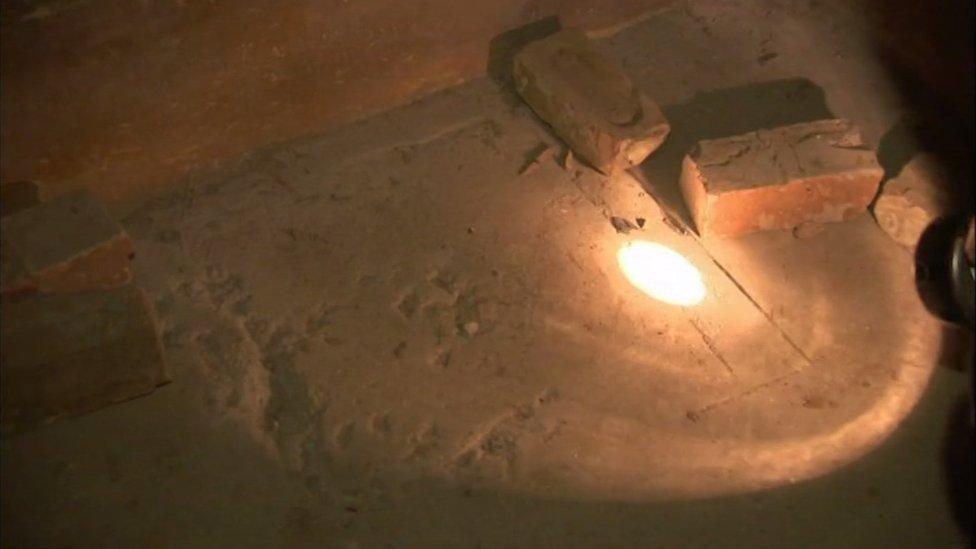
Inside Hut 9 lies the entrance to the now sealed tunnel
The preservation group rely on the generosity of donations from its visitors and supporters - and they hope the latest bumper weekend will help secure the work at Hut 9 - and the tunnel.
"If we can raise enough, what we hope to do is insert a sort of periscope device, so visitors can see from above how it would have been to crawl through, whilst at the same time protecting this precious part of our wartime history," Mr Exton said.
Island Farm was requisitioned by the War Office at the start of the conflict, and in its early years served as accommodation for female munitions workers, then as barracks for American troops in the build up to D-Day.
After the Normandy landings, it was re-designated PoW Camp 198, and readied to receive some of the thousands of German soldiers taken prisoner.
Considered too luxurious for the ranks, it held only officers - including Field Marshal Gerd von Rundstedt, who was in charge of the German army in Normandy during the Allied D-Day landings.
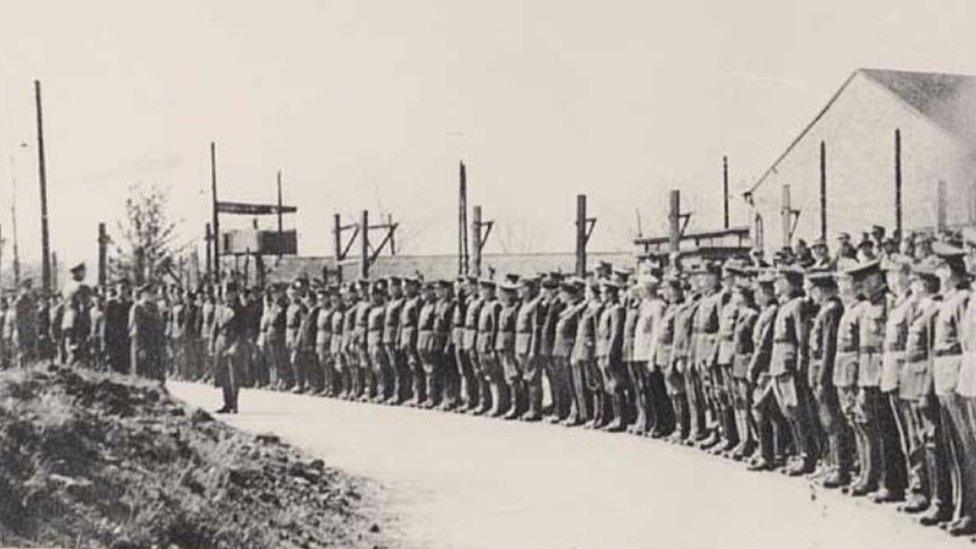
Officers at Island Farm salute Field Marshall Gerd von Rundstedt as he left to attend the Nuremberg war crime trials, as a defence witness
But within days of their arrival on 2 November 1944, the German officers had begun plans for escape.
Their first attempt at a tunnel was discovered in January 1945 - but Mr Exton said it appears to have been a decoy.
"The camp commandant had himself warned that escape tunnels often came in pairs, so it's a bit of a mystery why they didn't keep searching for another," he said.
"As it was, the PoWs were able to carry on digging under Hut 9 and out under the wire, and by March it was ready for the escape attempt."
The ingenuity of the captured soldiers is still acknowledged today, said Mr Exton.
Digging implements were fashioned from metal bars and wooden benches, with the tunnel roof propped up with bed legs - cut to the same length so guards would not notice the difference in height between the bunks.
The excavated clay soil was removed on a sledge and rolled into balls before being dropped into a false wall at the back of the hut.
Condensed milk cans were slotted together to form a ventilation tube, which was fed with fresh air from a hand-operated bellows on the surface, while the tunnel was illuminated with bulbs wired into the camp's electricity supply.
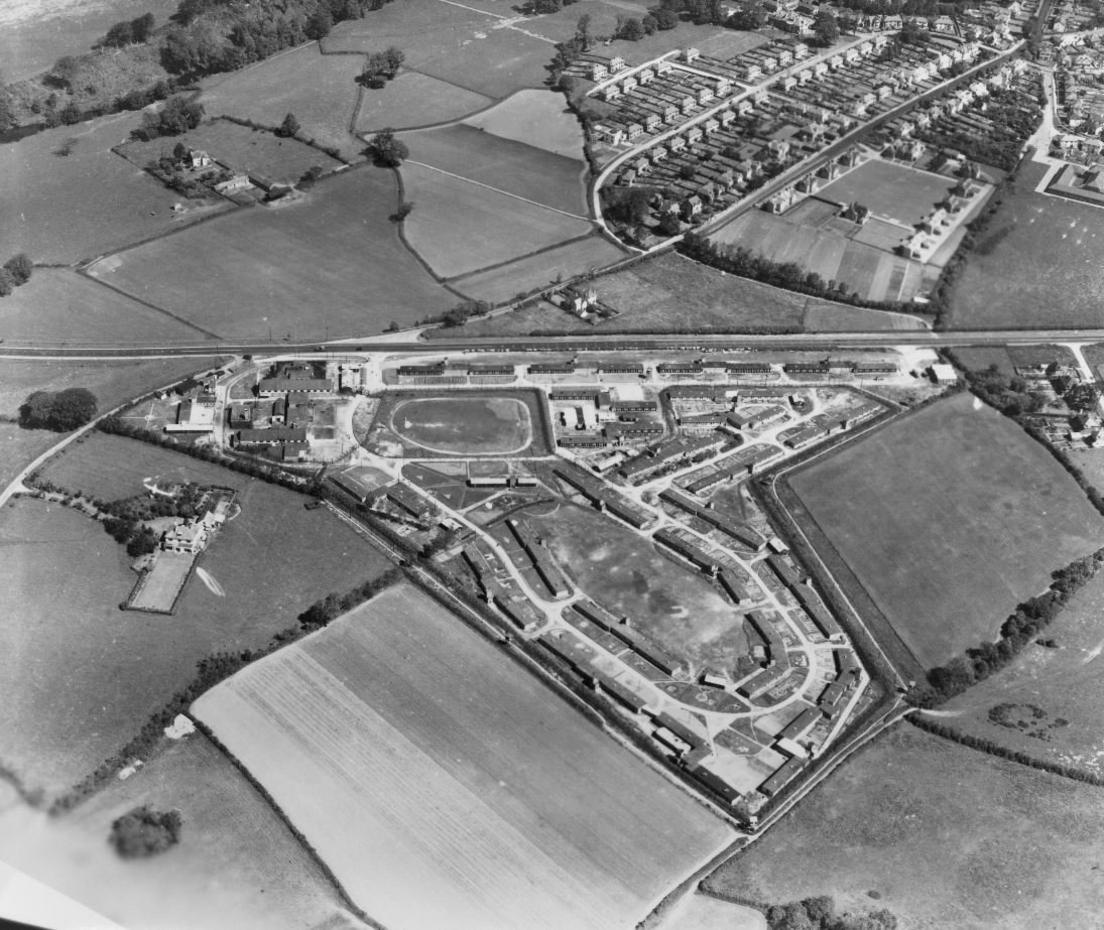
From the air: Island Farm in 1947

On the night of the escape, they went as far as sprinkling curry powder around the perimeter fence in order to put sniffer dogs off their scent.
"It seems incredible that all this work was able to take place undetected; it really was an entire camp effort," remarked the preservation group chairman.
"Although only a small proportion of the PoWs tried to escape, every single one of them would have been involved in distraction tactics, such as forming a noisy choir in the adjacent hut and staging a raucous play on the night of the escape."
Overall, 70 PoWs made it under the wire on the night and into the early hours of the following morning.
However, when the alarm was raised, 14 were recaptured within yards of the camp wire.
The majority were rounded up over the following three days, although some did make it an impressive distance.
One group was apprehended in Swansea in search of a ship out of Wales, while another was found in Southampton after stowing away on a freight train.
A third contingent made it as far as Castle Bromwich on the outskirts of Birmingham, having stolen a car from a Bridgend doctor.
Yet despite these deeds, Mr Exton is amazed how few people actually know about Island Farm's history.
"It's been called 'The Germans' Great Escape'- yet when I mention it to people all I get are blank faces," he said.
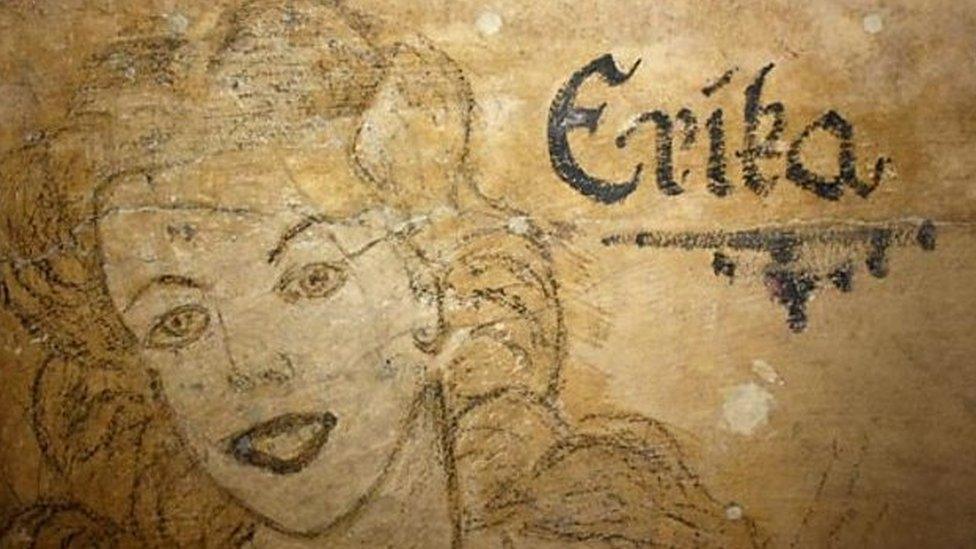
Graffiti drawn by PoWs can still be seen at the hut
After the war, the camp was abandoned, left to the elements, and to vandalism.
Despite Hut 9 being a listed building, it was "as if Bridgend had turned its back" on Island Farm, said Mr Exton.
"When I started reading up about it I became obsessed.
"From there a group of us came together to begin restoring the hut, and gradually interest has grown over the years, to the extent that the tours we run on Armistice weekend and the March anniversary are now sold out as soon as we announce them."
- Published7 March 2015

- Published28 June 2011
